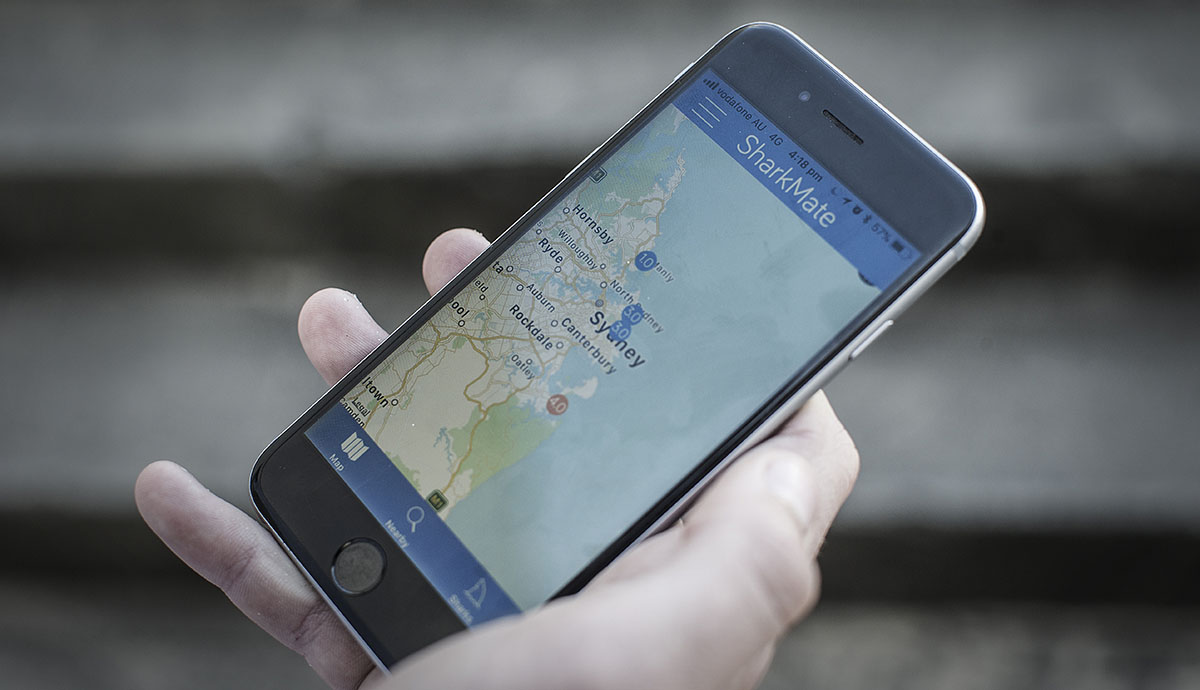April 13, 2018
Teenager launches app to rate beach safety for shark attacks
SharkMate predicts likelihood of shark attacks off more than 100 Australian beaches
The launch of SharkMate this week – an app that predicts the likelihood of shark attacks off more than 100 Australian beaches - marks an important milestone in the dream of a South Coast teenager.
Samuel Aubin started developing his app at the age of 13 as a means of promoting shark conservation and to increase the public’s knowledge of shark locations.
The app uses a wide range of real-time data – air temperature, water temperature, time of day, the presence of life-savers and the proximity to wastewater treatment plants – to predict the likelihood of a shark attack.
Each beach is given a score of one to 10, where the higher the number, the higher the likelihood of a shark attack.
“I hope that people use SharkMate to stay safer and more comfortable in the water, reducing the need for environmentally damaging shark attack mitigation strategies,” Samuel said.
“In the future I want to add many more beaches to the app because this issue of shark conservation needs to be addressed globally.”
Now after two years of development, and the help of researchers at the SMART Infrastructure Facility at the University of Wollongong, Aubin has presented his idea to Amazon Web Services (AWS) Innovation Summit day, part of the three-day summit currently being staged in Sydney.
The summit is attended by more than 10,000 people and explores the innovation made possible using AWS services such as cloud computing, artificial intelligence, the Amazon Echo, virtual reality and speech-to-text services.
SharkMate uses algorithms that collate the data, using the AWS Lambda ‘serverless’ paradigm of computing that eliminates the need to maintain servers and the operating system.
SMART honorary senior fellow, Dr Matthew Berryman said SharkMate was a good example of the possibilities offered by the Digital Living Lab, launched last year as a free service to the community.
“We are so proud to have been able to help Samuel develop his app over the past two years with advice,” Dr Berryman said.
“This is a good example of how the University can partner with talented members of the community to create something that has global potential.
“And this is not the end. We are currently developing an exciting additional feature integrating SharkMate into another project supported by SMART and the Digital Living Lab, SharkEye - an automated shark notification from drone imagery platform which we hope to announce later this year.”
SharkMate is available free from the Apple App Store. Details: https://bit.ly/SharkMateApp
 The SharkMate app uses real-time data – air temperature, water temperature, time of day, the presence of life-savers and the proximity to wastewater treatment plants – to predict the likelihood of a shark attack.
The SharkMate app uses real-time data – air temperature, water temperature, time of day, the presence of life-savers and the proximity to wastewater treatment plants – to predict the likelihood of a shark attack.
WHAT IS THE DIGITAL LIVING LAB?
The Digital Living Lab is a smart city solution working to improve the quality of life for people in the community. It shares data from sensors throughout the region that address key social and environmental challenges, using Low-Power Wide-Area Network or other networks. See http://digitallivinglab.uow.edu.au/
WHAT IS THE SMART INFRASTRUCTURE FACILITY?
Established in 2011 by the University of Wollongong, SMART brings together experts from fields such as transport, water, energy, economics and modelling and simulation and provides a state-of-the-art facility to support this important research. An international leader in applied infrastructure research, SMART is helping to address the challenges of infrastructure planning and management both now and into the future.
:format(jpg)/prod01/channel_3/assets/live-migration/www/images/content/groups/public/web/media/documents/mm/uow245381.jpg)